Keep up with the latest IoT-based building automation, and follow us on LinkedIn!
Maintaining guest comfort, food safety compliances, asset health, and electrical safety are paramount for any successful hotelier. Smart building automation solutions can help mitigate many of these challenges. By deploying the right building management solution that includes complete building visibility, analytics-driven insights and IoT integrations, a leading hotel owner is able to maximize their energy & operational efficiencies along with a seamless asset management. Let’s deep dive on the business case.
Customer Profile
The customer is one of the world’s leading hotel brands with 1200+ hotel properties and 150,000+ rooms across 65+ countries.
Pain Points
The customer faced multiple challenges, including lack of visibility into energy consumption, asset health, HVAC equipment operations & associated anomalies (TFAs, Secondary Pumps, AHUs), customer comfort (temperature profiles of critical areas such as restaurants, lobby, public areas etc.), food safety (temperature profile of Walk-in chillers, Deep Freezers, Butchery, Main kitchen etc.). So, there was a scope to improve operational inefficiencies and energy savings.
To address above issues, the customer chose ZenConnect, a full stack IoT based energy and asset management solution that helps hotels optimize energy consumption, maintain ambient environment & food safety compliances, enhance asset health, facilitates digital workflows, and provides central visibility across properties.
Solutions
Zenatix Solutions carried out the pilot project in accordance with the customer’s requirement, which was a success as it yielded tangible results within the first month.
ZenConnect brought the entire property onto a single platform that can be accessed and managed via a web-based dashboard. The scope of the solution included the following:
-
Electrical monitoring of Diesel generator, Mains & LT panel meters to enable visibility into energy consumption, power quality and equipment health.
-
Temperature monitoring of refrigeration equipment, chillers (in & out temperatures), AHUs & TFAs to maintain food safety compliance & occupant comfort compliance.
Various IoT sensors (energy meters, temperature sensors) were installed at relevant equipment (mains grid, DG, HVAC, etc.) to collect relevant data sets continuously. The data from these sensors along with the BMS data was further sent to the gateway controller for cloud-based AI/ML data processing. It was then presented to the relevant stakeholders as actionable insights on a web-based dashboard.
Such insights enabled the identification of issues such as temperature variations outside the normal range, abnormal or beyond scheduled operations of equipment, low power factor, and low food safety compliances across chillers and freezers.
Henceforth, the customer has been better equipped with the tools & technology to curb energy losses, enhance guest comfort & food safety compliances, and get the most out of their assets & equipment.
Results
With the visibility (monitoring) and automation (control) provided by ZenConnect, the customer was able to achieve 7% energy savings via monitoring alone, 30% improvement in AHUs temperature compliance, ~10% improvement in food safety compliances at some refrigeration equipment, 24% reduction in high temperature values in key areas, and optimized equipment performance.
A. Energy Monitoring & Analytics
The customer could now track incoming energy (Fig A1), energy consumption (Fig A1), power factor (Fig A2), etc. Furthermore, alerts were sent whenever the power factor deviated from the acceptable range. This enabled the maintenance of correct power factor, reducing the energy consumption by 1.2% (Fig A2).
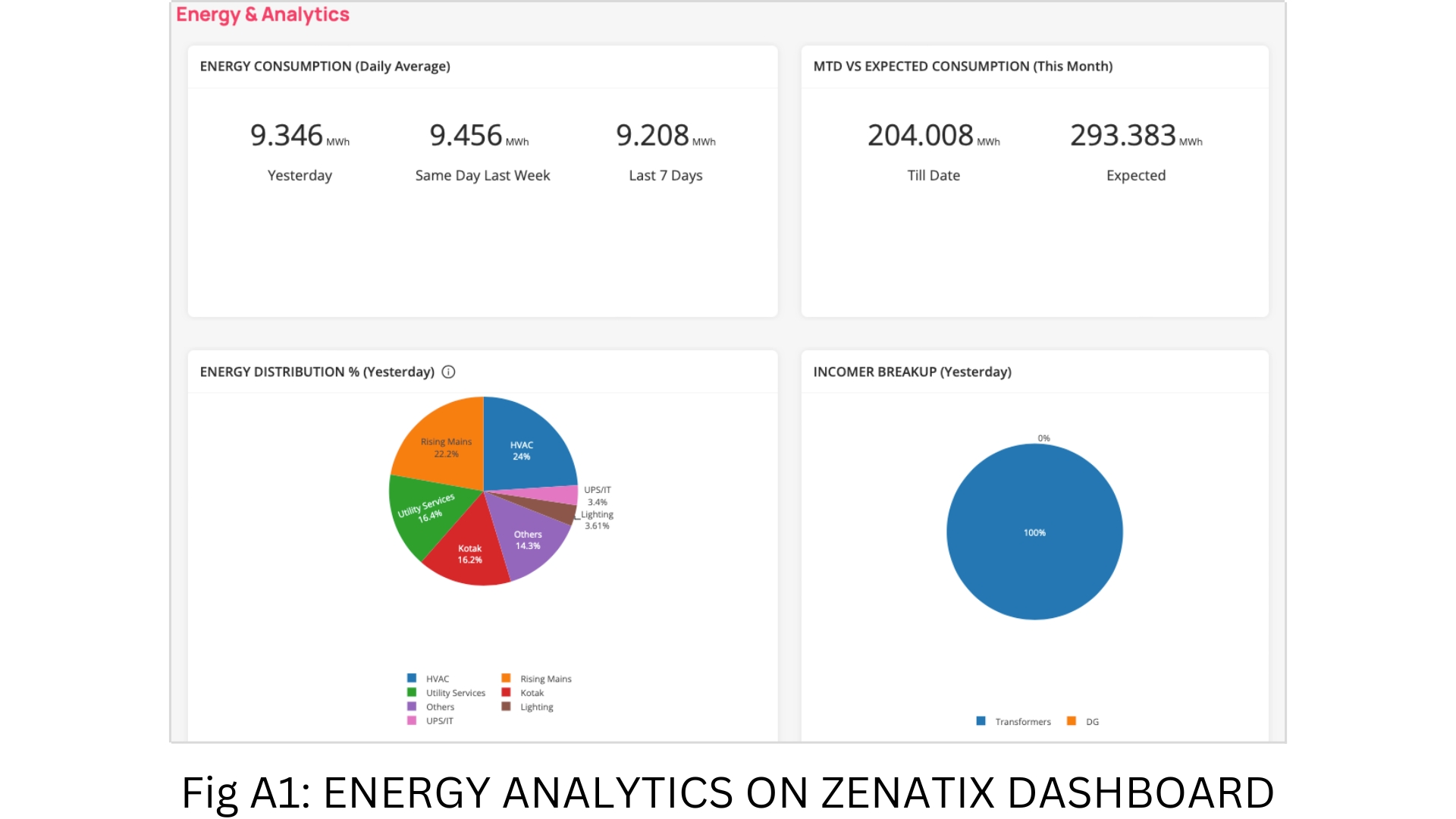
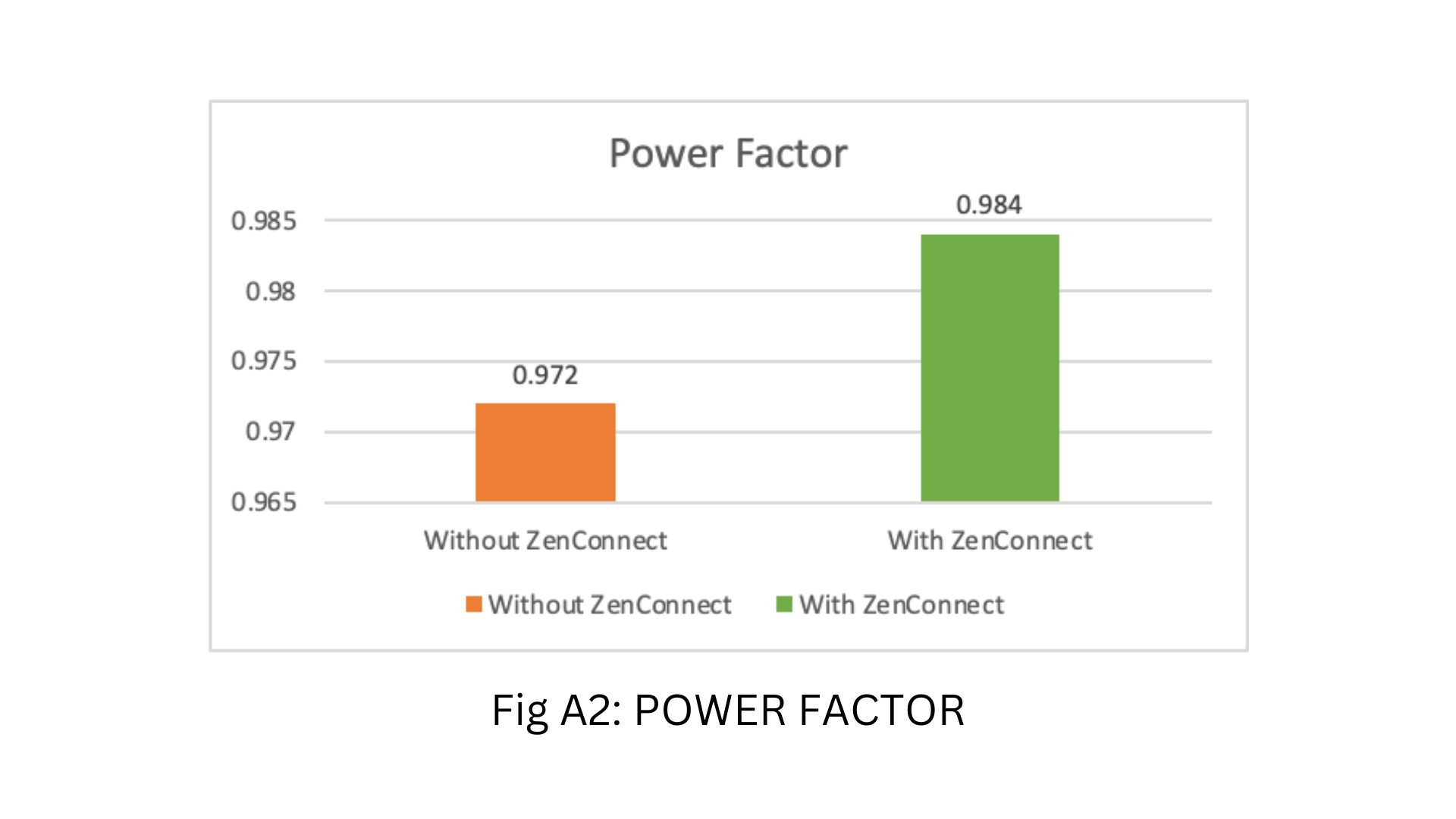
B. Temperature Monitoring
Temperature levels of various hotel areas are now trackable (Fig B1). Such monitoring of HVAC system helped the customer in maintaining the desired temperature (Fig B2). Automated alerts were sent out in the form of tickets whenever AHU temperature exceeded the compliant range (Fig E1).
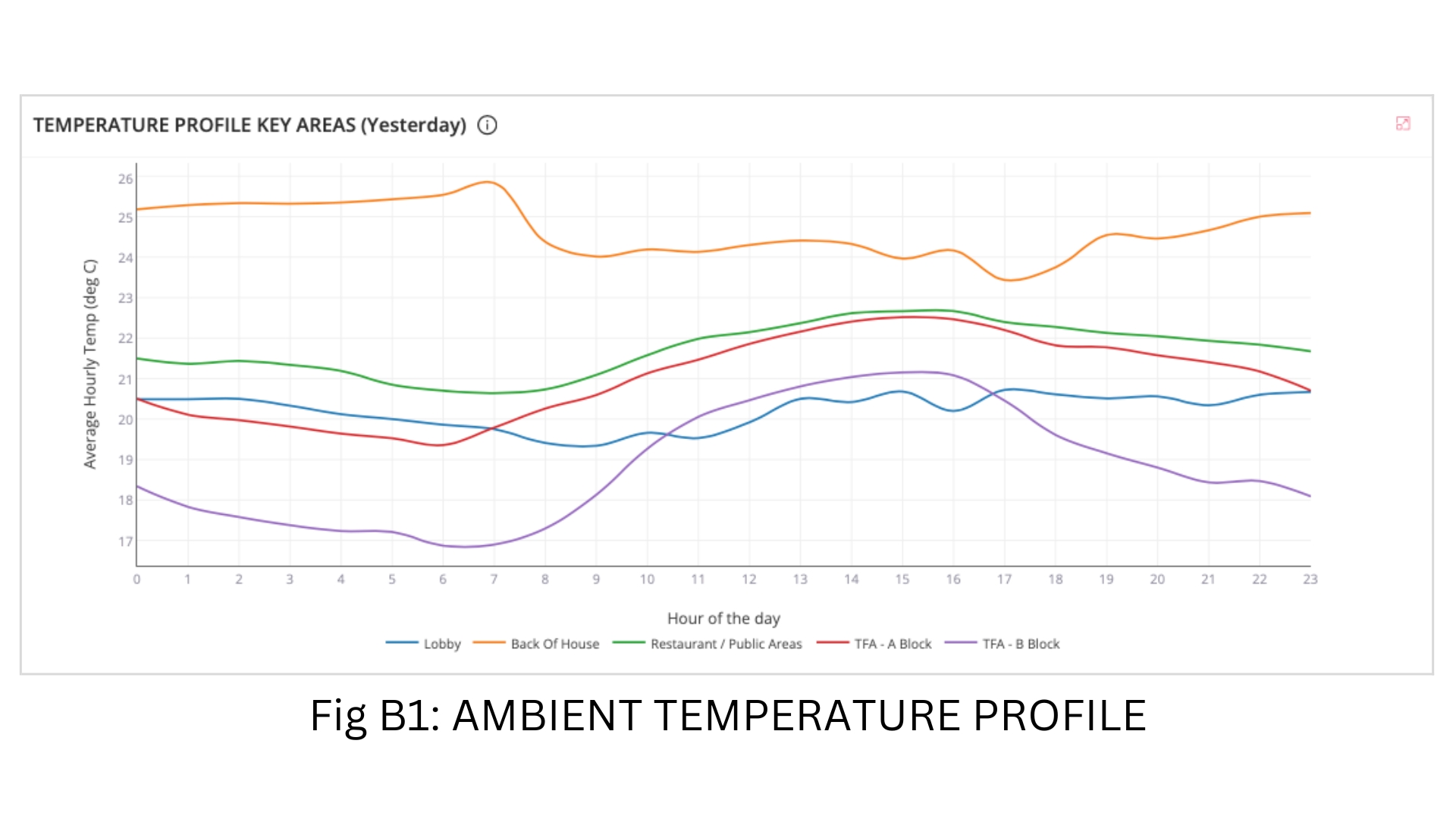
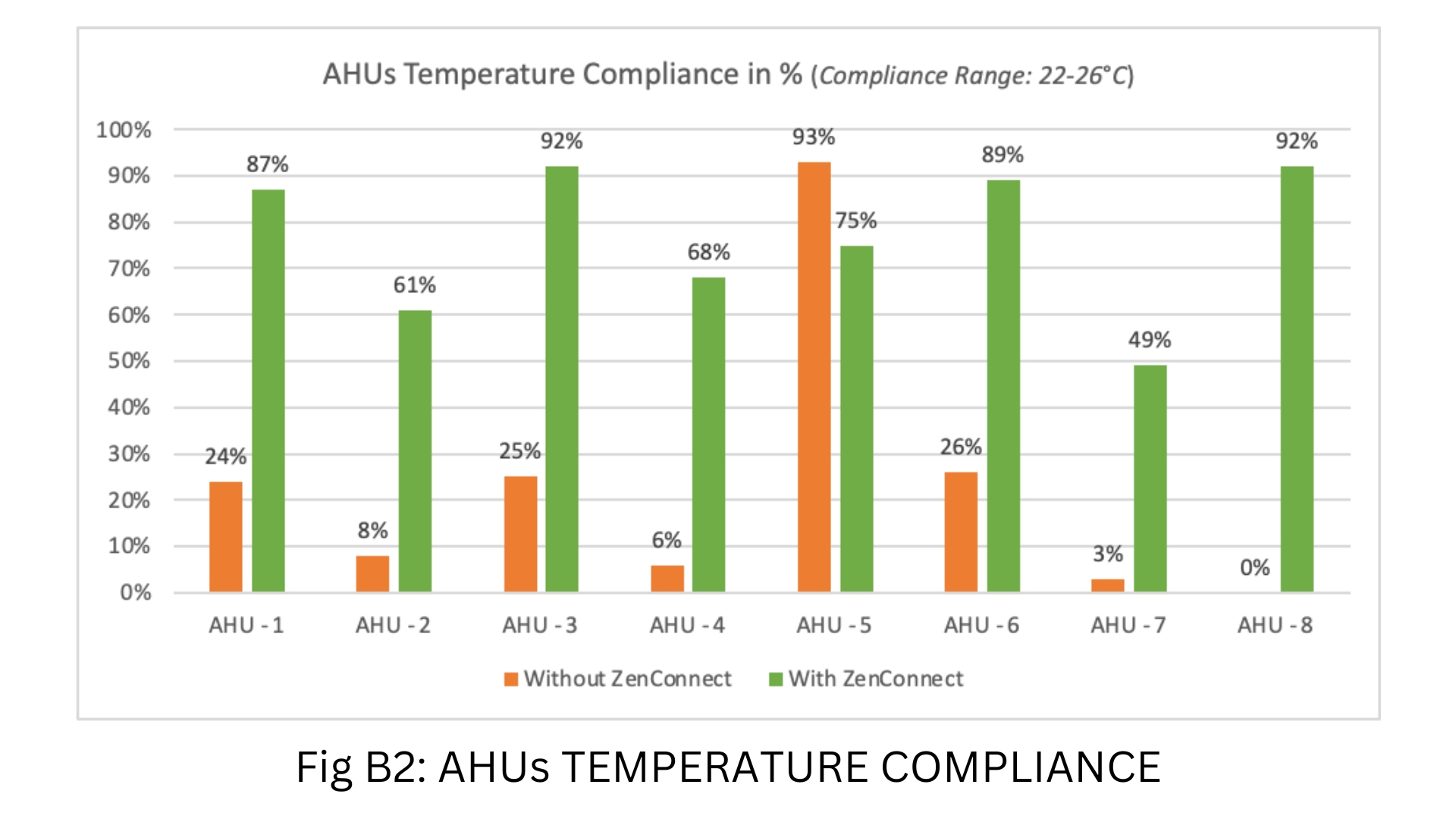
C. Food Safety Compliance
Food safety compliance was extremely low in most of the chillers and freezers (Fig C1). It could be due to incorrect set points or insufficient chiller cooling performance. ZenConnect enabled real-time refrigeration temperature monitoring to keep the temperature within the ideal range for improved food safety compliance.
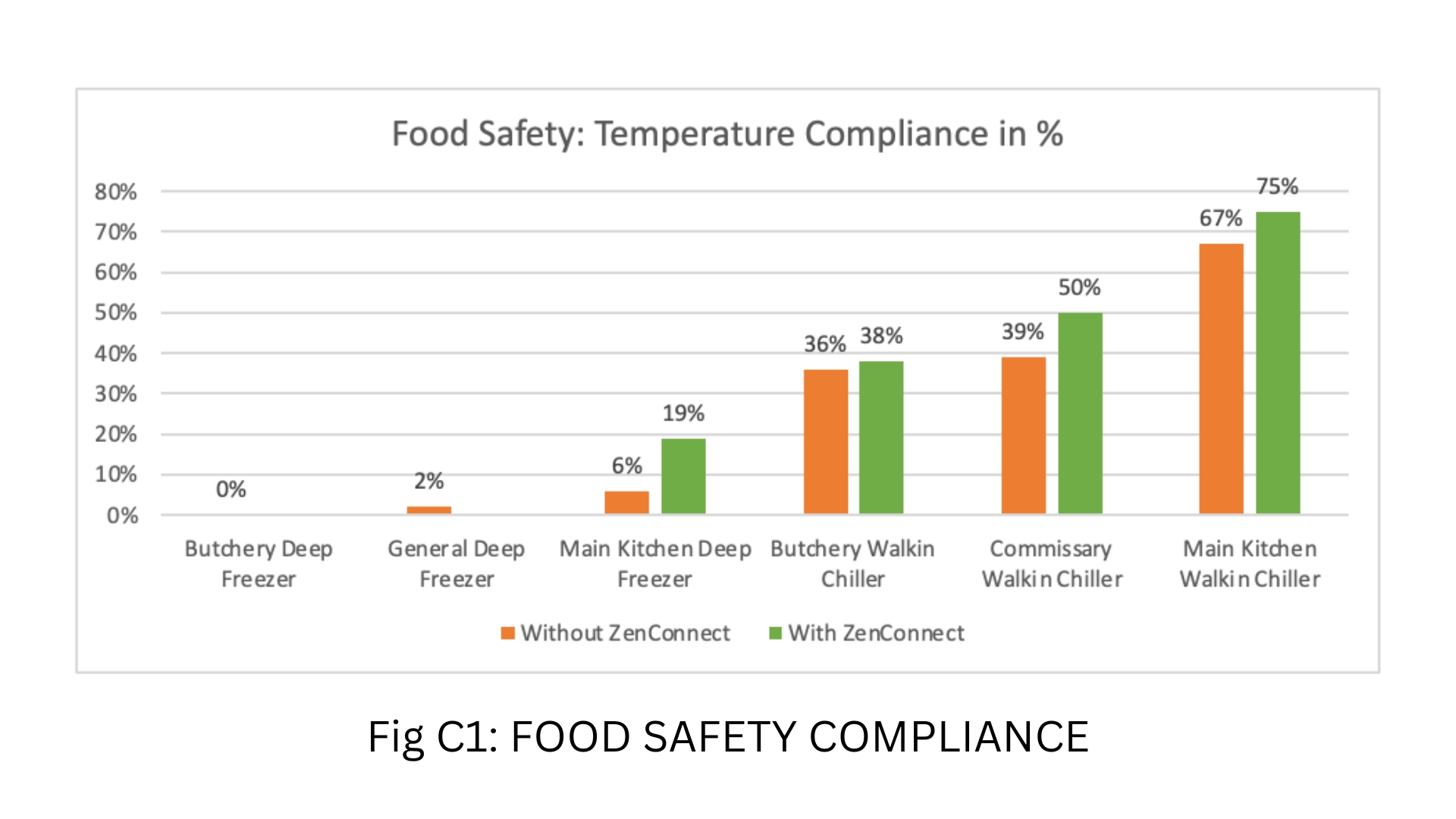
D. Electrical Health & Safety
Visibility into voltage imbalance allowed for a more balanced load distribution resulting in electrical safety (Fig D1).
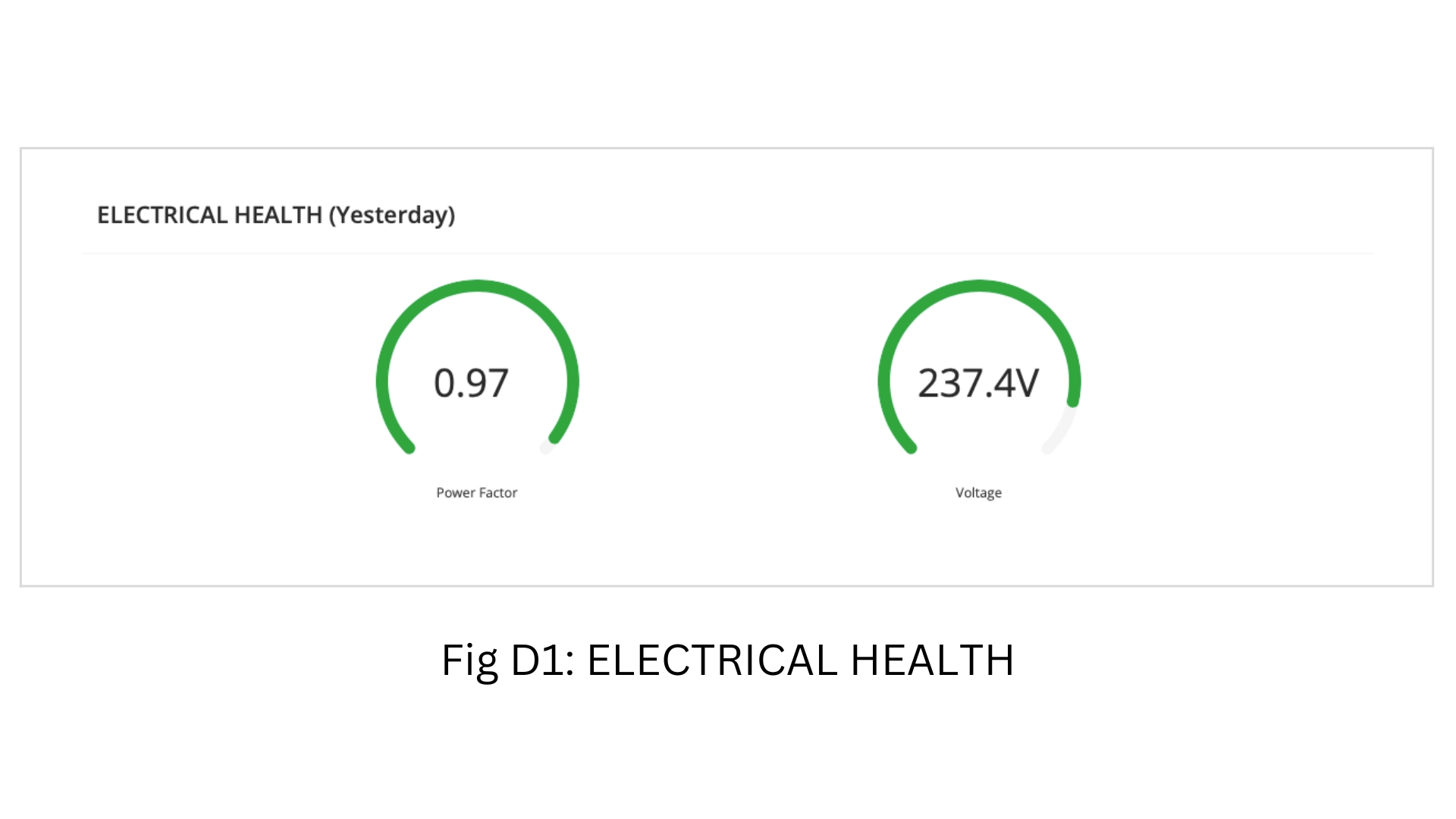
E. Predictive Maintenance
FDD (fault detection and diagnosis) allowed for early fault detection and subsequent predictive maintenance. Digital ticketing workflows alert the maintenance team in case of any abnormalities such as unbalanced load, low power factor, temperature & food safety incompliance, etc. Such an automated ticketing system enhanced guest comfort, reduced energy wastage, and eliminated sudden equipment breakdowns (Fig E1).
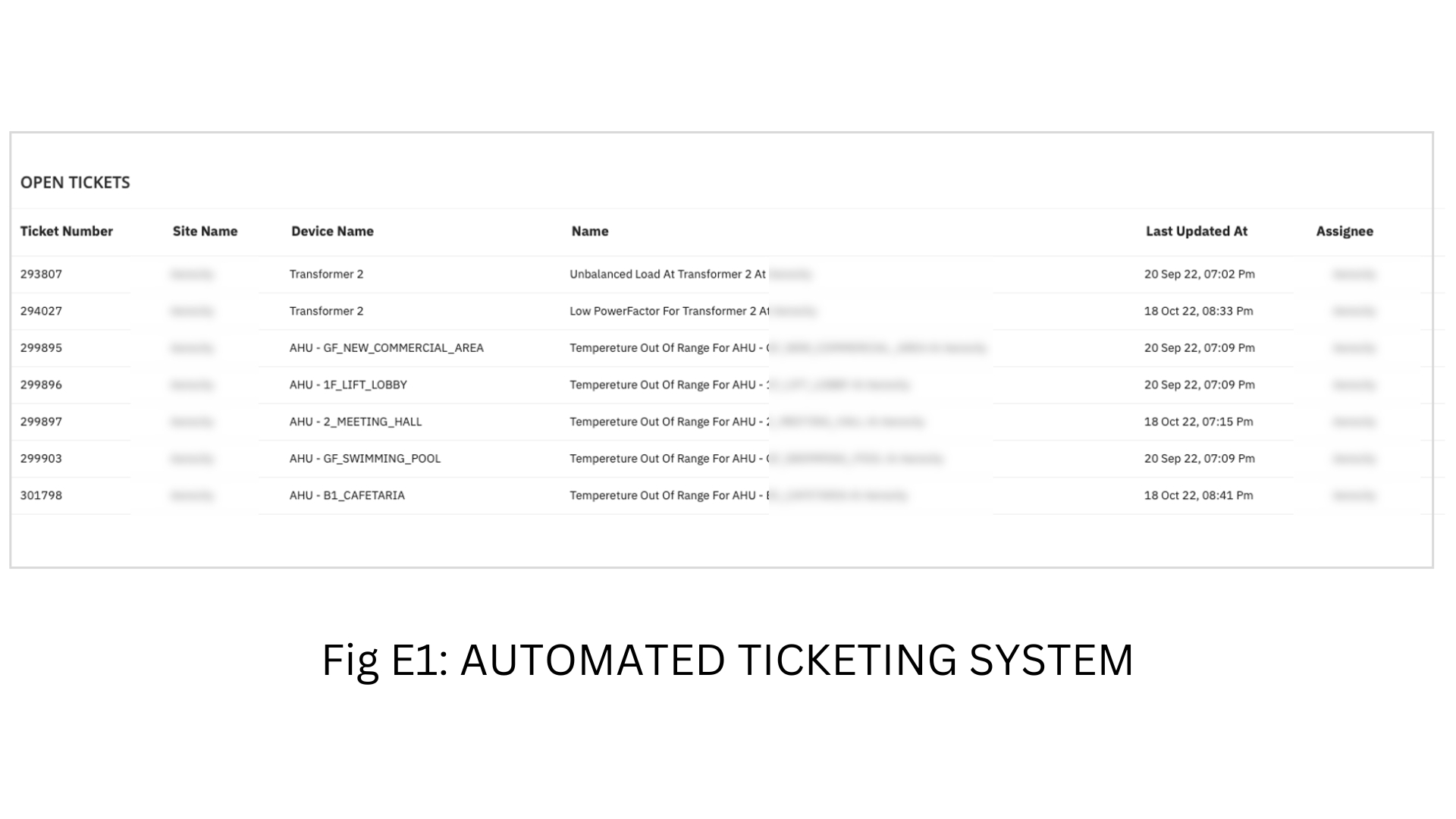
F. CO2 Emissions Monitoring
The customer could now track its equivalent CO2 emissions (Fig F1) to be more environmentally conscious and contribute towards a more sustainable future.
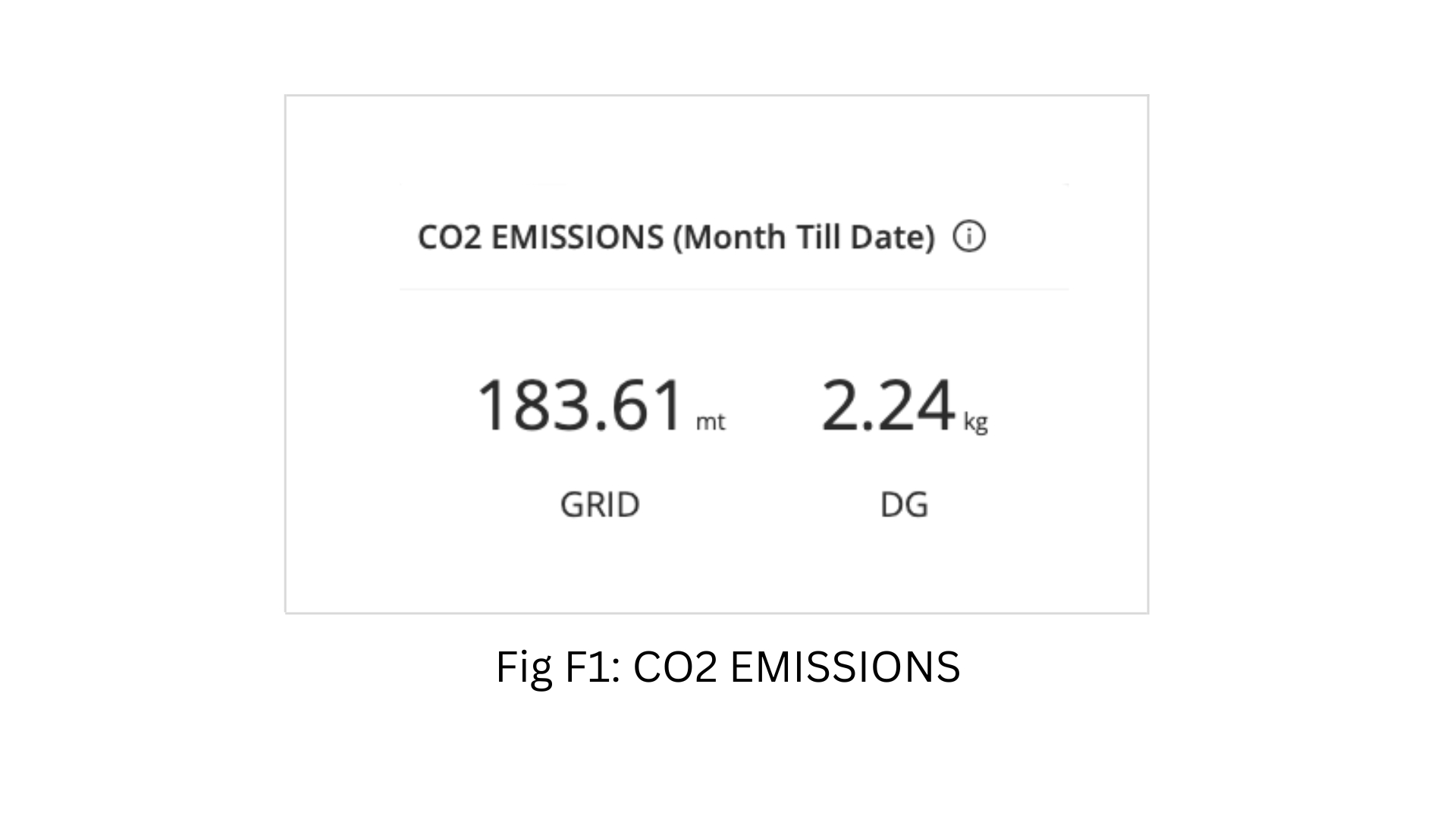
ZenConnect not only helped the customer in providing a seamless experience for their guests but also reduced energy wastage, resulting in increased operational profitability.
transform small, mid-sized and large buildings with its cost-effective and retrofit ready IoT solutions.
Talk to our experts: Contact us
Write to us: marketing@zenatix.com
Visit our website: https://www.zenatix.com/solutions/hotels/
Keep up with the latest IoT-based building automation, and follow us on LinkedIn!
